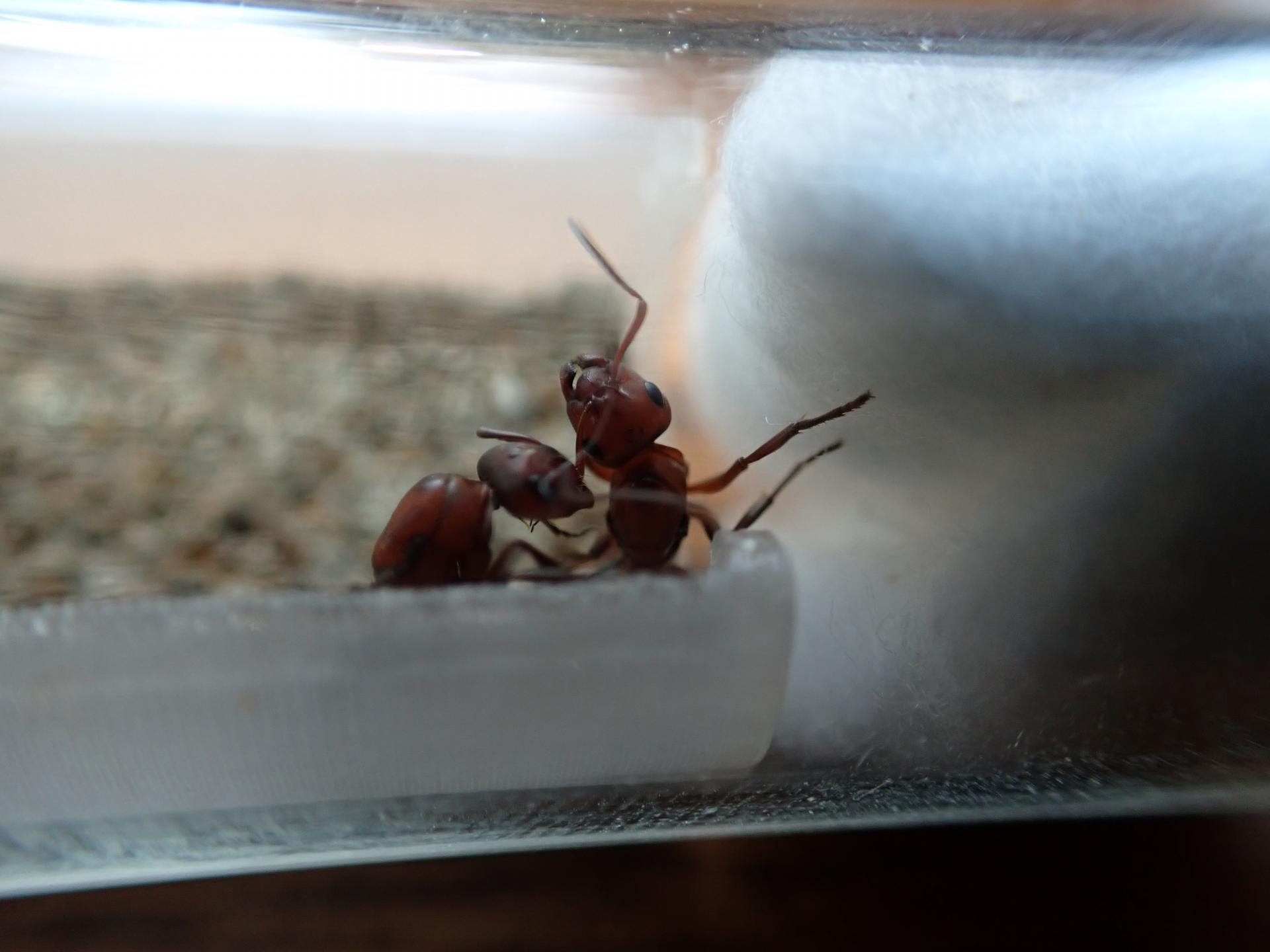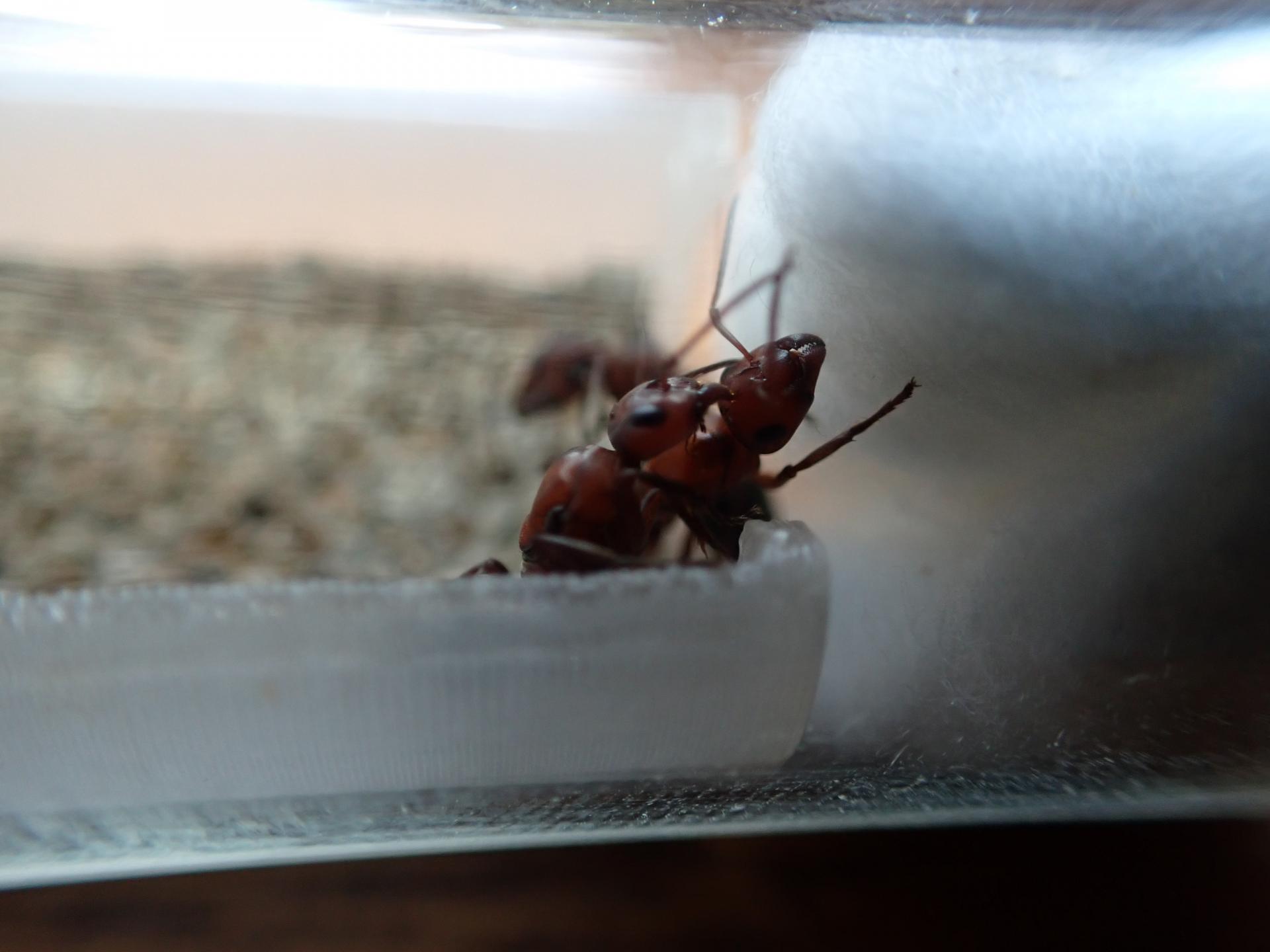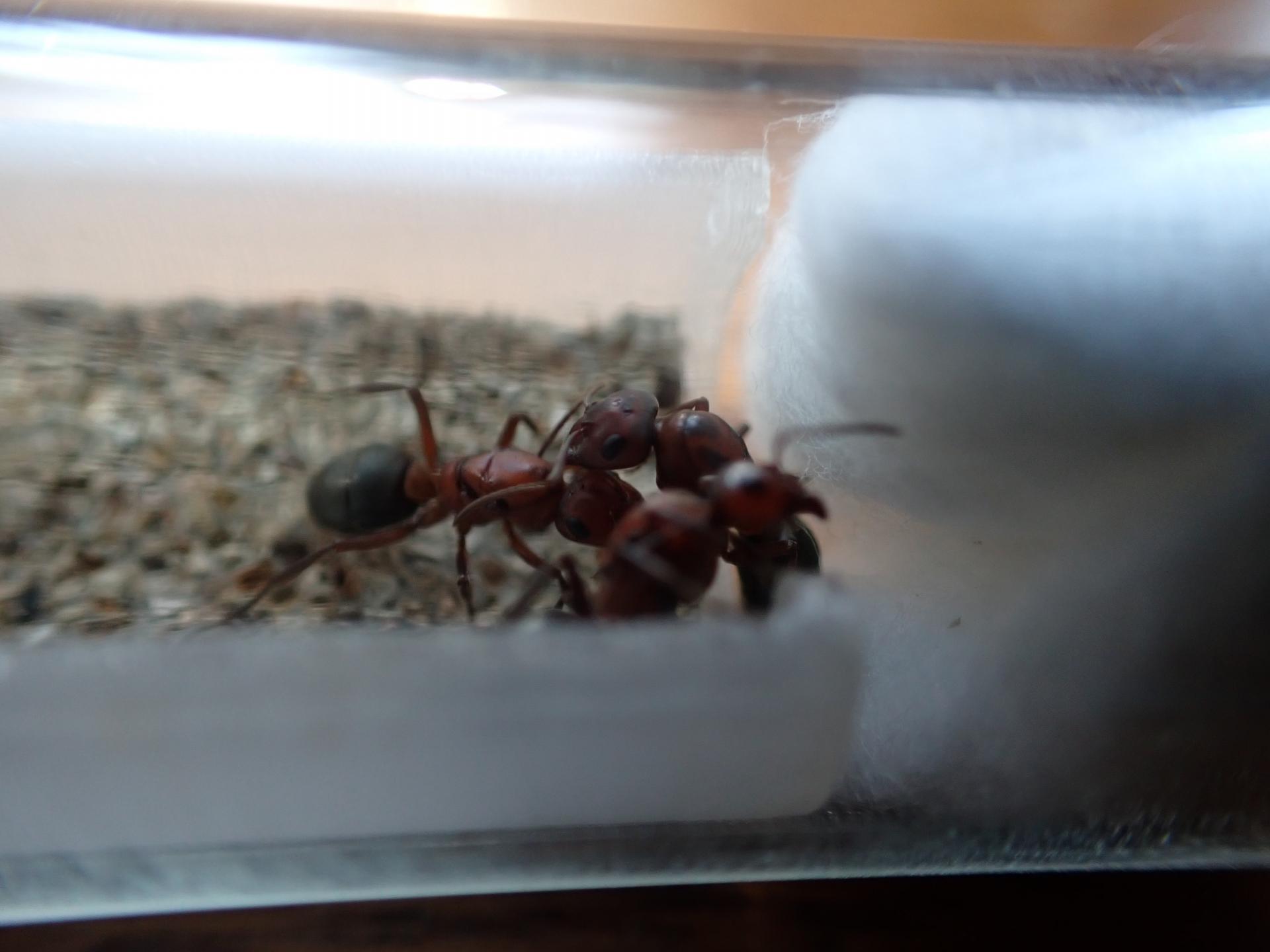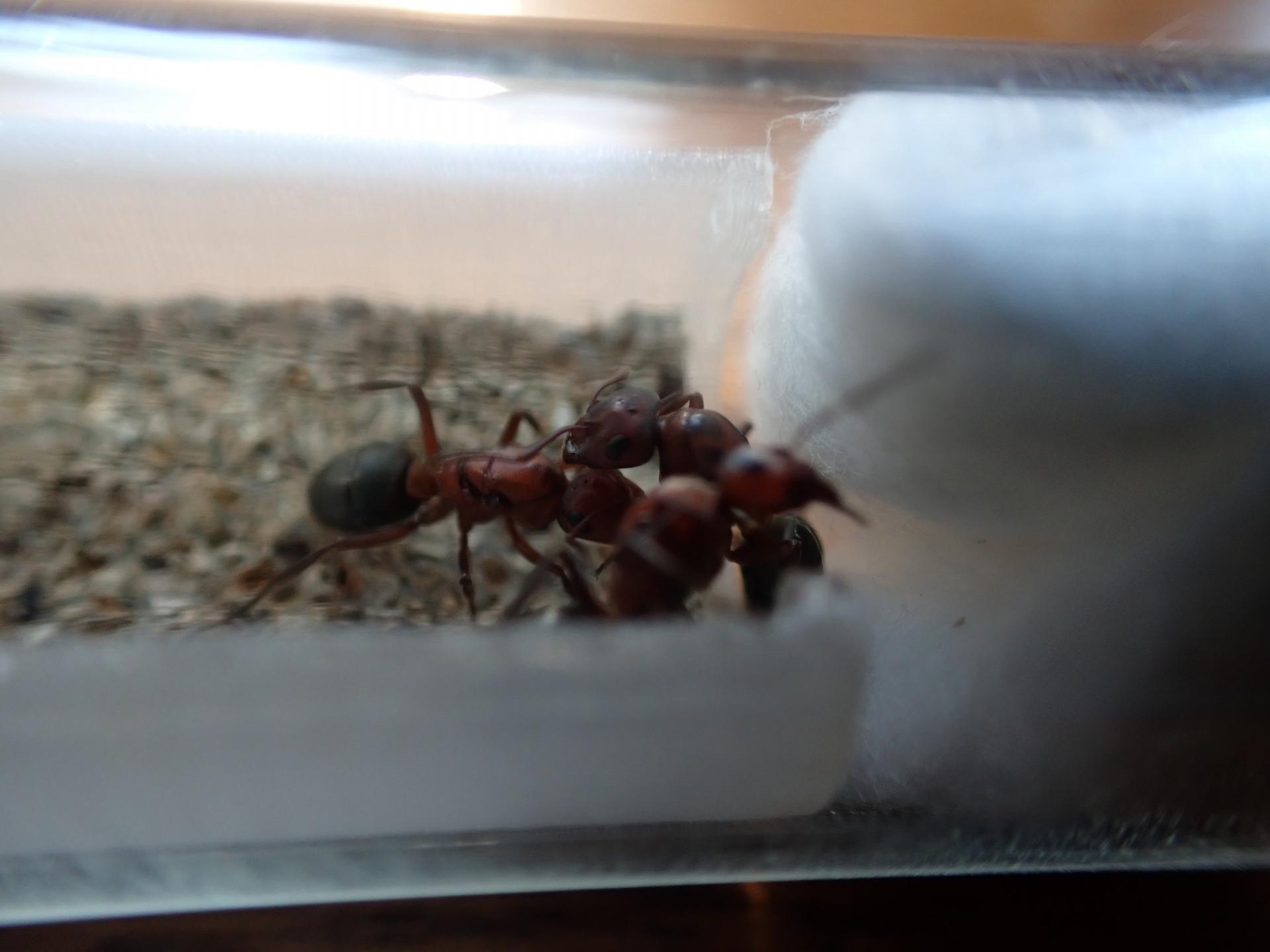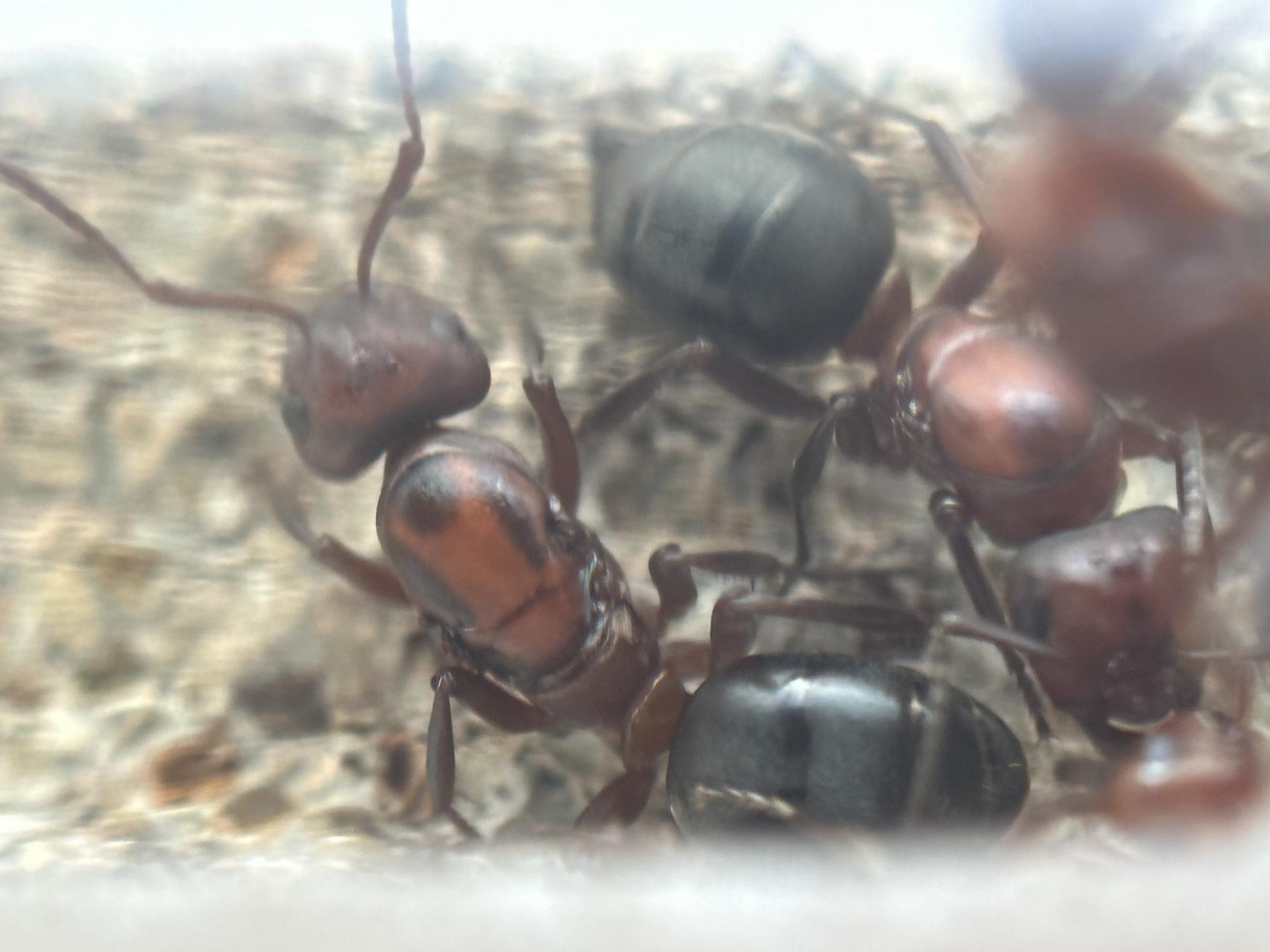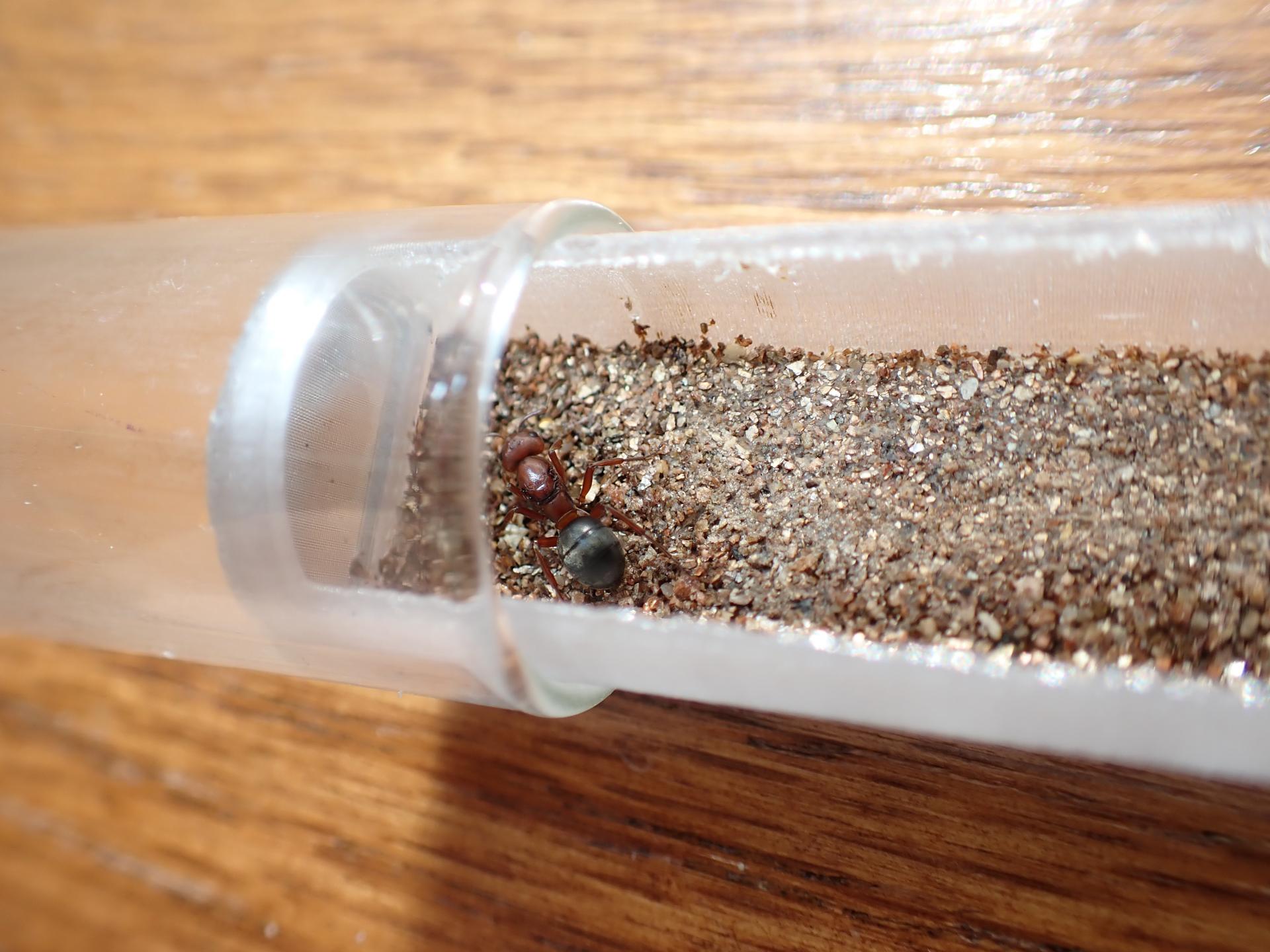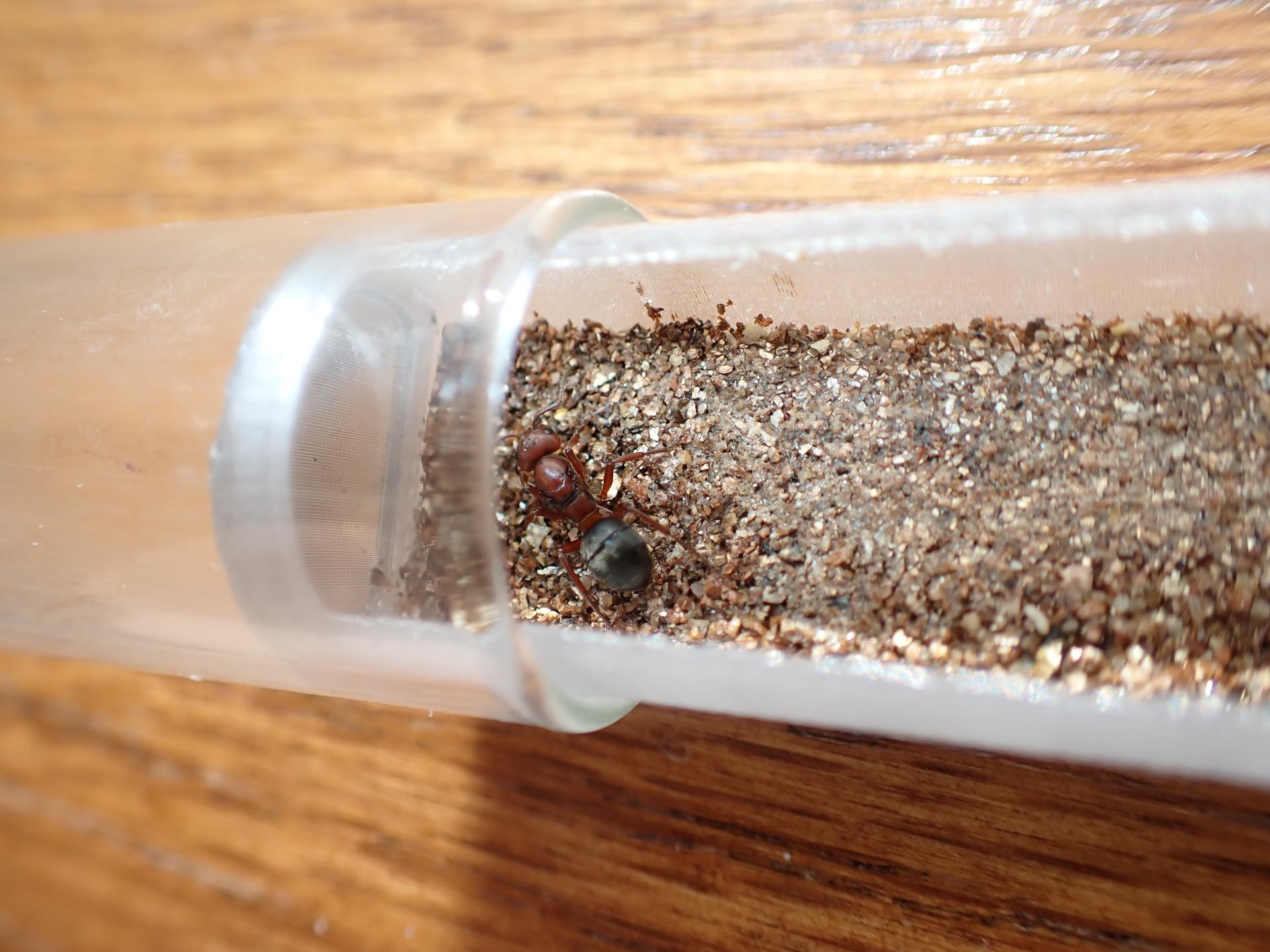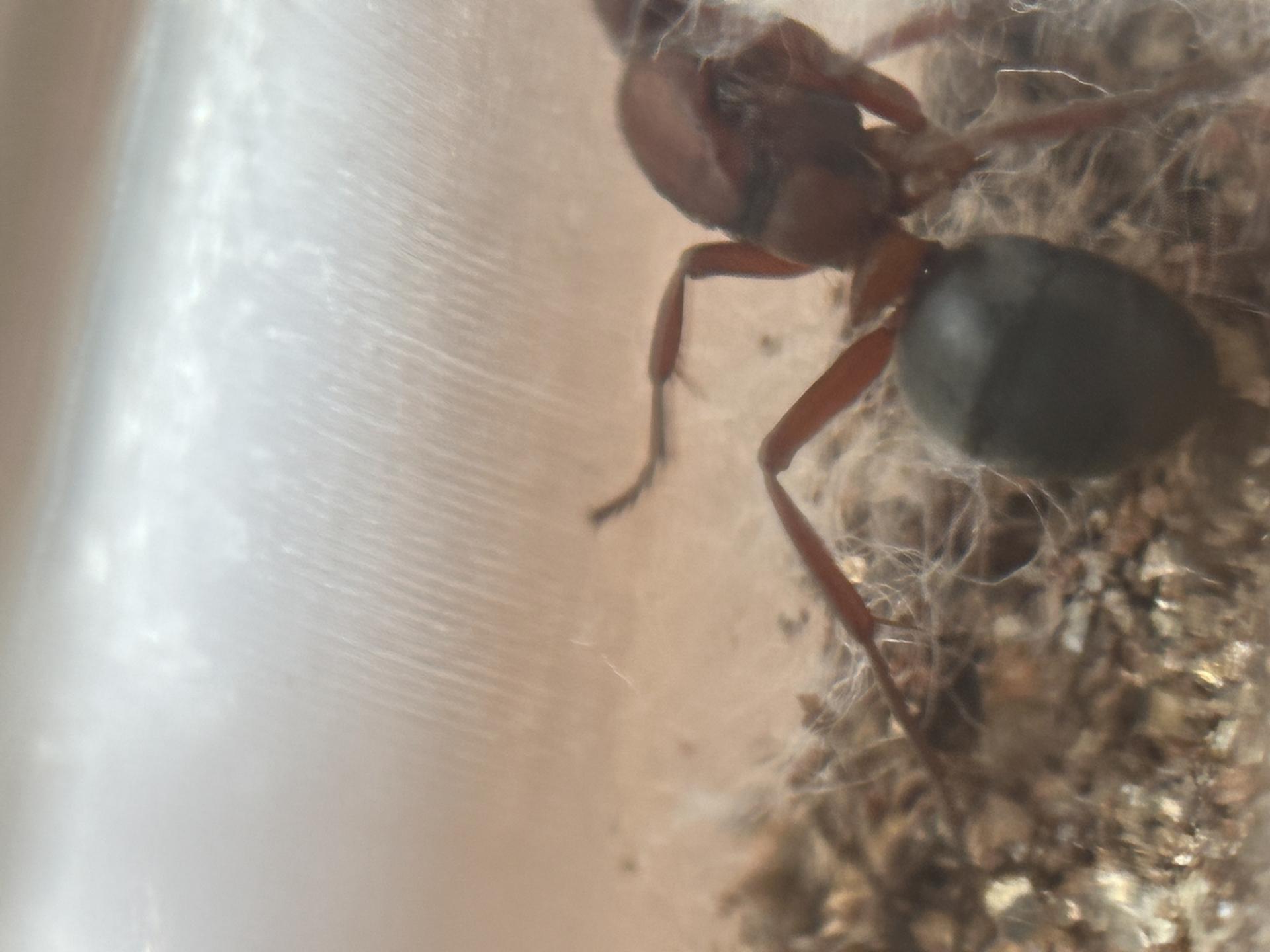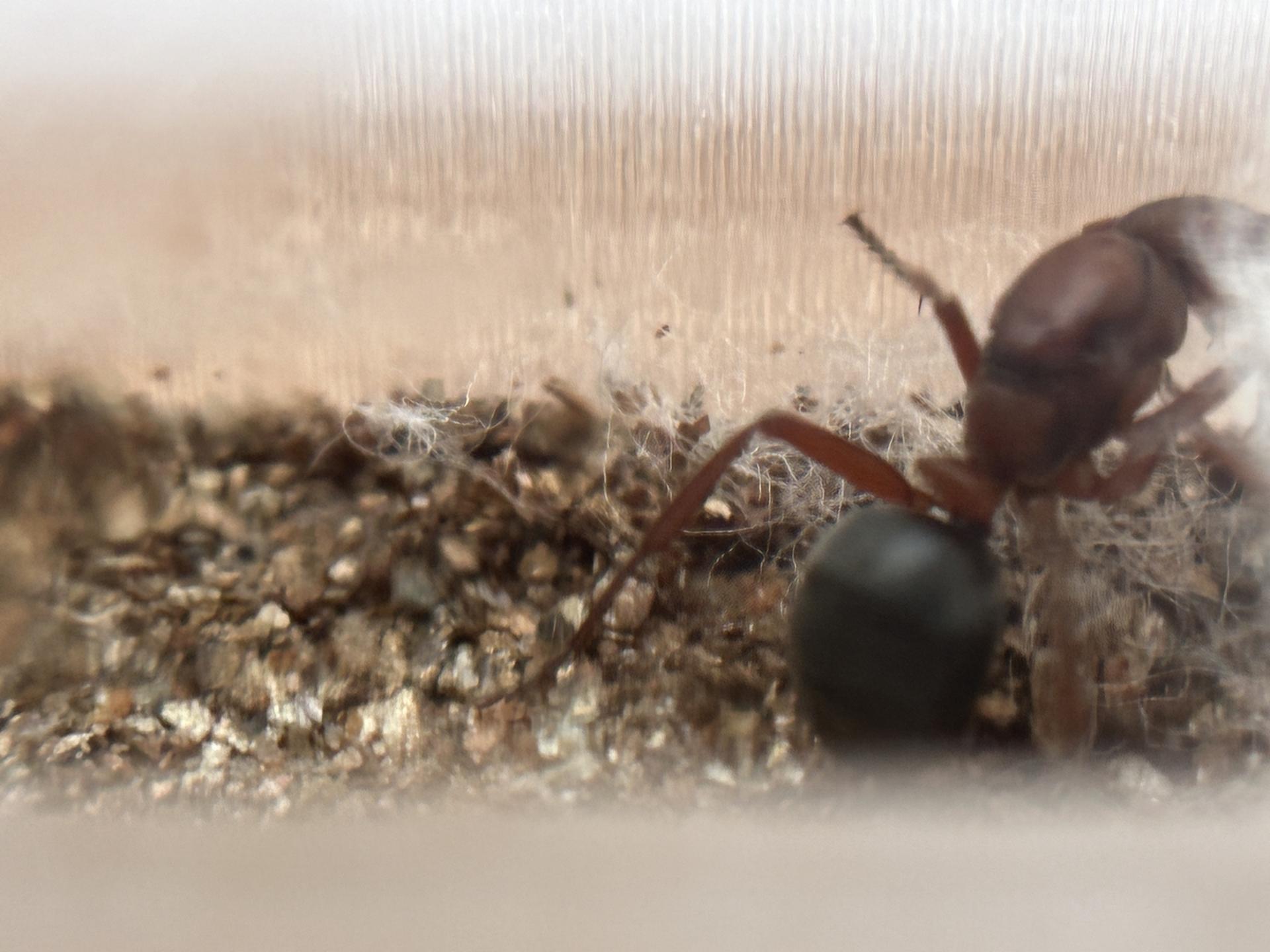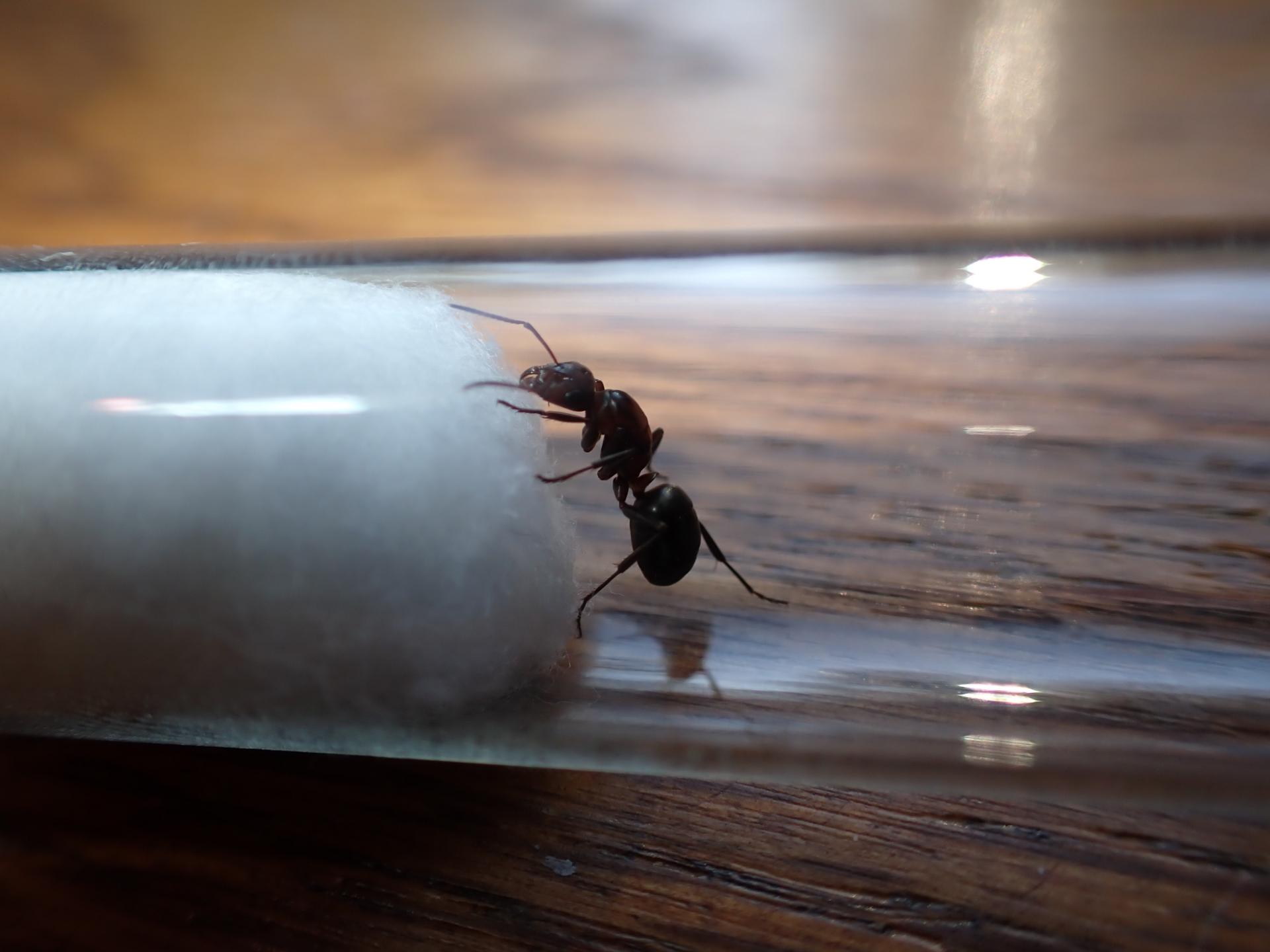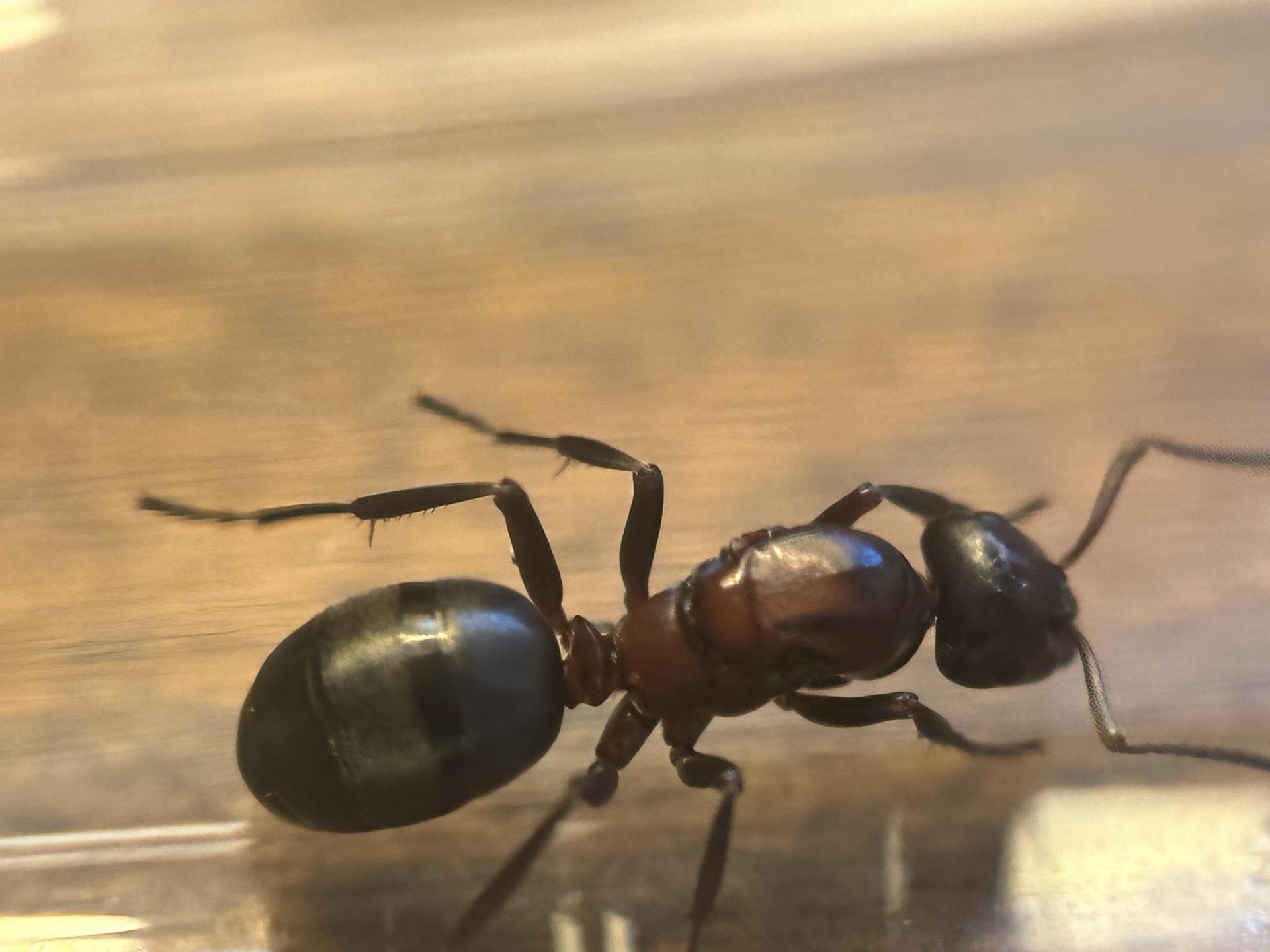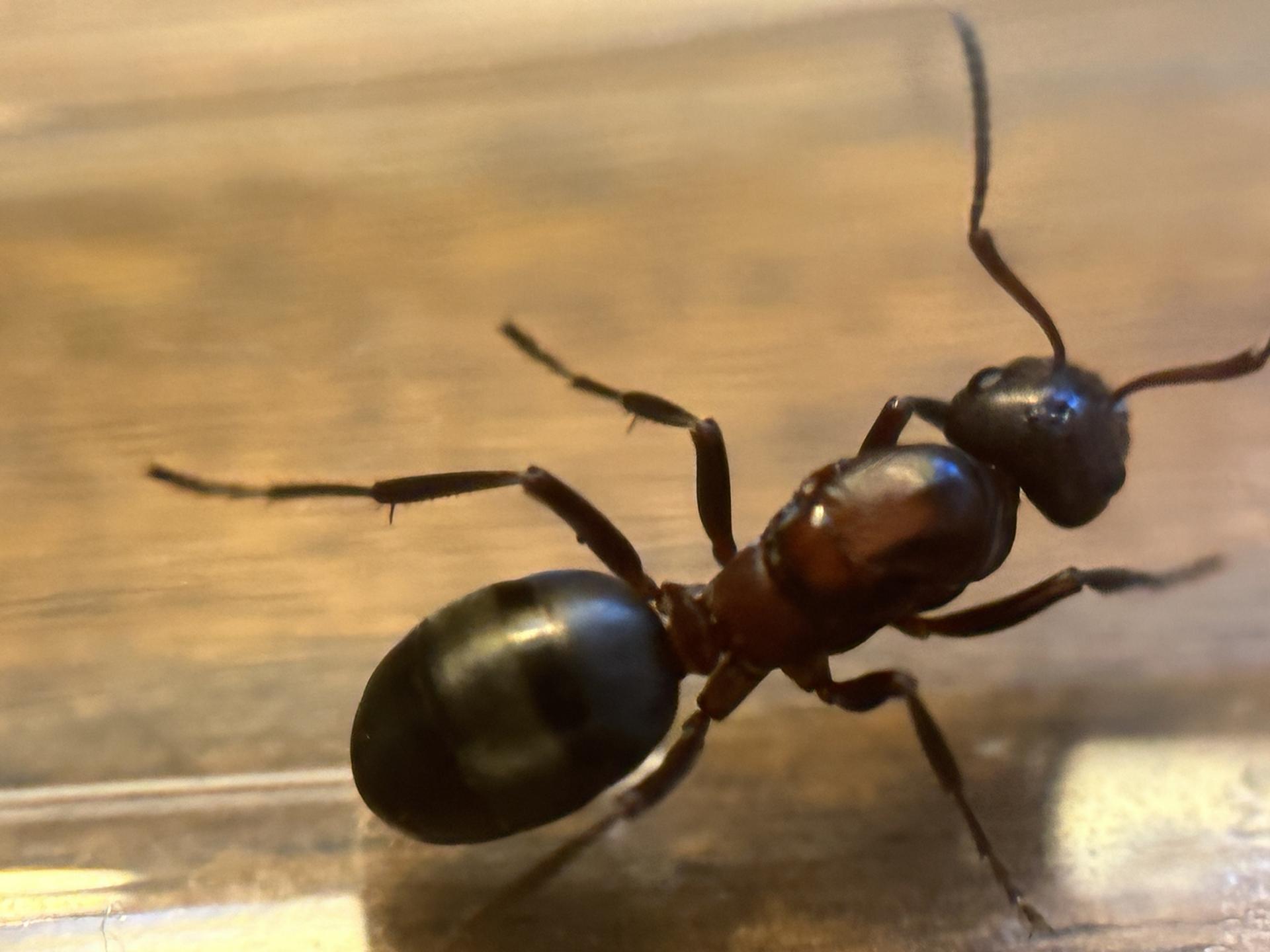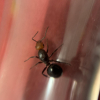Queen #1
1. Location: Black Hills, SD.
2. Today's date: 8/3/2024
Body:
1. Location of collection Custer State Park
2. Date of collection: 7/29-8/2
3. Habitat of collection: Coniferous Ponderosa pine forest floor
4. Length: ~9mm
5. Coloration, hue, pattern and texture: Black matte abdomen with silvery white hair scattered generously and evenly, matte red throax with a shinier lighter red "X" shape marking it(similar to F. pacifica). This "X" shape can be either pronounced or relatively hidden, although still identifiable. The head is a dark red of a similar hue to the thorax, and is large.
6. Distinguishing characteristics: Large head and very large thorax, "X" pattern on thorax(Very distinctive)
7. Anything else distinctive: Seems polygynous or pleiotropic, as multiple queens will groom each other and stick together very closely[EDIT: The colony is not polygynous, queens fight after brood is introduced]
8. Nest description: Unknown
9. Nuptial flight time and date: Unknown, these queens can be found for weeks after a flight foraging for a host nest
10 . Apologies for not having the clearest pictures, the glass got in the way
Queen #2
1. Location: Black Hills, SD.
2. Today's date: 8/3/2024
Body:
1. Location of collection Custer State Park
2. Date of collection: 7/29-8/2
3. Habitat of collection: Coniferous Ponderosa pine forest floor
4. Length: ~8mm
5. Coloration, hue, pattern and texture: Similar to the above mentioned queen, however slightly smaller and without the "X" pattern on the thorax. She also has a noticeably smaller thorax.
6. Distinguishing characteristics: Smaller thorax
7. Anything else distinctive: No
8. Nest description: Unknown
9. Nuptial flight time and date: Unknown, these queens can be found for weeks after a flight foraging for a host nest
Queen #3
1. Location: Black Hills, SD.
2. Today's date: 8/3/2024
Body:
1. Location of collection Custer State Park
2. Date of collection: 7/29-8/2
3. Habitat of collection: Coniferous Ponderosa pine forest floor
4. Length: ~8mm
5. Coloration, hue, pattern and texture: Very similar to the #1 queen, however she is distinctly shinier, and has a noticeably smaller and darker head. The abdomen also seems slightly more shiny, with more distinct stripes.
6. Distinguishing characteristics: Very distinct "X" pattern on thorax
7. Anything else distinctive: Nope
8. Nest description: Unknown
9. Nuptial flight time and date: Unknown, these queens can be found for weeks after a flight foraging for a host nest
10 . Apologies for not having the clearest pictures, the glass got in the way
Edited by Ants_Dakota, August 3 2024 - 6:36 PM.






